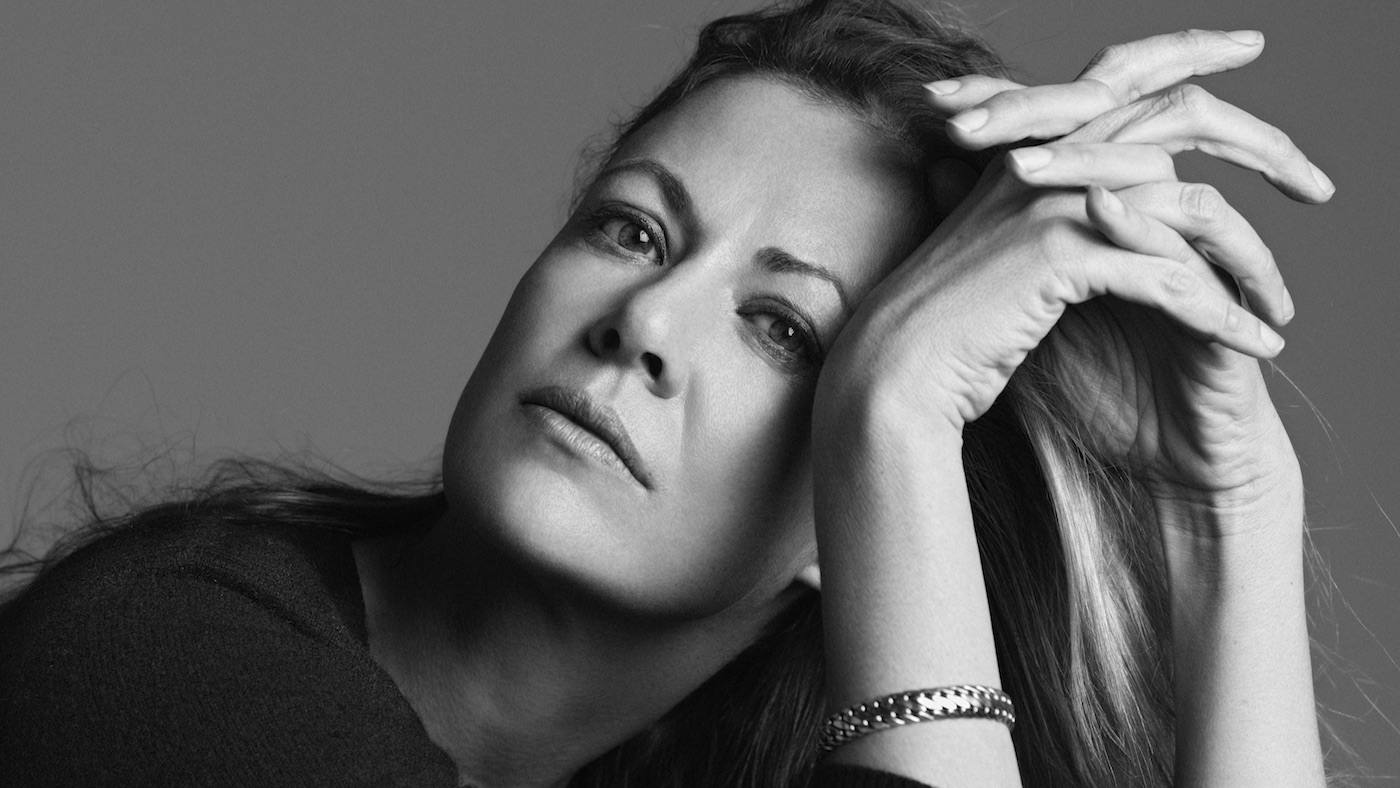Viviane Sassen's Kenyan Souvenirs
From her Amsterdam studio, the fashion and fine art photographer discusses lighting, poses and exotic road trips

Danish author Baroness Karen Blixen opens her great 1937 memoir, Out Of Africa, with a succinct yet immersive description of her exotic surroundings. "I had a farm in Africa, at the foot of the Ngong Hills," she writes. "In the day-time you felt that you had got high up, near to the sun, but the early mornings and evenings were limpid and restful, and the nights were cold." Today, that same brilliant light is captured in the pictures of Dutch photographer Viviane Sassen.
Born in 1972, Sassen spent her early childhood in western Kenya before her family relocated to the Netherlands when she was aged five. At the root of Sassen's art are her memories of the African countryside, its climate and its people. "Those were my very first childhood years, when I first consciously experienced everything," she reminisces. "Sometimes I say it's like a blueprint, these formative years."
On location for brands including Paul Smith, Missoni and Hermès, or when working on her own fine-art projects, Sassen clicks the shutter when the sun is at its highest altitude, her models casting stark shadows with sculptural poses. Her images blur the line between contemporary art and commercial photography. "Instead of avoiding midday light, I would start shooting around those time frames," says Sassen of the experimental method she developed when first recording the people of Kenya using her father's analogue Pentax camera. "I was always inspired by shadows, and I think that is something that has since become part of my work."
The Week
Escape your echo chamber. Get the facts behind the news, plus analysis from multiple perspectives.

Sign up for The Week's Free Newsletters
From our morning news briefing to a weekly Good News Newsletter, get the best of The Week delivered directly to your inbox.
From our morning news briefing to a weekly Good News Newsletter, get the best of The Week delivered directly to your inbox.
Sassen initially enrolled to study fashion design in Arnhem, a short drive south-east from Amsterdam. Her peers included designers Viktor & Rolf, and she would model the duo's creations to make ends meet as a student. Two years into her course, she shifted direction into photography, graduating in 1996 from the HKU University of the Arts Utrecht, which she followed with a one- year specialised master's degree in Fine Art at Ateliers Arnhem. The first publication to feature Sassen's work was Austerlitz, a literary magazine, followed swiftly by Olivier Zahm's avant-garde title Purple at the turn of the millennium.
Halfway through our interview, Amsterdam is hit by a blackout. The tension between light and darkness being such a focal point of Sassen's work, the timing of this energy failure seems fitting, if not prophetic. "Clothes can make or break a good picture," she muses over a cup of tea. With no electricity at her studio by the Prinsengracht, the city's longest canal, Sassen has decamped to her photo laboratory nearby to resume our talk.
While not completely ruling out a return to Kenya, for now the Netherlands are home to Sassen and her family. "I think it's very important to keep this balance between work and private life," she explains. "Otherwise, I would have chosen to live in New York or Paris or London a long time ago."
Sassen has good reason to seek out the simplicity of home; her work dictates that she is constantly on the go, globetrotting from continent to continent, working for a plethora of designers. Tomas Maier approached her to shoot his SS16 Bottega Veneta campaign as part of the brand's 'Art of Collaboration' project. To date, Sassen is the only photographer to work on two consecutive campaigns with Maier. For AW16, she placed models Rianne van Rompaey and Simon Fitskie within the surreal and sun-drenched concrete landscape of Il Grande Cretto, the land art masterpiece created by Italian painter/sculptor Alberto Burri in central Sicily.
A free daily email with the biggest news stories of the day – and the best features from TheWeek.com
"If there is no notion of the real, the everyday, it becomes boring," says Sassen of her composition. "I used to plan a lot of shoots by making sketches – I always carry a sketchbook – but nowadays I tend to just go with the flow. I think that's one of the greatest attributes of becoming older: at some point you have reached this level of experience, so you know how to deal with different situations. It's confidence, but it's also a kind of intuition."
Sassen's list of clients – as diverse as Le Monde and POP magazine – is testament to the impactful and unifying quality of her work. When American designer Phillip Lim first recruited Sassen in 2015, the pair set off for Bhutan, unhampered by the gruelling schedule typically assigned to a fashion campaign. The pair travelled across the South Asian country with a small crew and two street- cast models, shooting looks in ad hoc locations. "It was almost like seeing the country as a tourist," recalls Sassen. "I had never been to these places and we had hardly any location pictures. We just had this itinerary of where we would go, and we would be open to what we encountered."
Despite a busy schedule, Sassen finds time for fine-art projects; she has had solo exhibitions around the world, from Savannah, Georgia in the US to Cape Town in South Africa, as well as work represented at the Daegu Photo Biennale in South Korea, and also the Venice Biennale. In 2014, the ICA showcased the series of images she shot in Pikin Slee, a village deep within the rainforest of Suriname, while Sassen's late 2014/ early 2015 show at The Photographers' Gallery in central London was her first proper retrospective. The title of the exhibition was 'Analemma: Fashion Photography 1992-2012', named after the figure-of-eight shape created if you were to plot the position of the sun as seen from the same location at the same time over the space of a year. "I am ambitious, but not in the sense that I want to work for that brand or this magazine; it's more the work itself," says the photographer of her artistic endeavours.
Like the aforementioned Danish baroness, Sassen has captured her passion for Africa on the printed page: the 2011-published Parasomnia is a dreamlike diary of her travels through West and East Africa. In Sassen's images, models bend, stretch and lunge their bodies into dramatic, disorientating positions. Many of her photographs show no faces, only the lithe limbs of her subjects casting shadows against intensely lit backdrops. "Once you see a face, it's about that particular person, and you can read the picture by reading someone's face. But if you don't see the face, I feel that you can still detect an emotion from the body position. It's a very organic process, almost like working with clay," says Sassen, describing her interpretation of models as human sculptures. "It's a collaboration between me and my model."
Similar to her fascination with lighting, the photographer's interest in the human form stems from personal experiences while growing up. "I have always had this fascination for the body and sculpture," she explains. "When I was a teenager, I was super-skinny, and I would stand in front of the mirror and make really weird shapes. It would really intrigue me." Sassen's father was a doctor at the hospitalin the remote Kenyan village where she grew up, and the family home bordered a hospice for children suffering from polio. It was here that she found her playground friends, and forged an early interest in human anatomy. "It didn't occur to me that this was a very serious illness," she recalls today. "I saw it every day, so it was kind of normal to me, but at the same time I was intrigued because I thought there was this beauty in it."
Back in the Netherlands, Sassen is currently working on three new personal projects, one of which experiments with using Photoshop in an exaggerated way. "We'll see where that takes me," she says pensively. So far, Sassen's intuition has served her well.
-
 How the War Department became the Department of Defense – and back again
How the War Department became the Department of Defense – and back againIn Depth In 1947 President Harry Truman restructured the US military establishment, breaking with naming tradition
-
 Codeword: December 8, 2025
Codeword: December 8, 2025The daily codeword puzzle from The Week
-
 Sudoku hard: December 8, 2025
Sudoku hard: December 8, 2025The daily hard sudoku puzzle from The Week